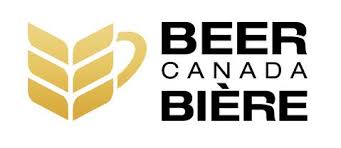Earlier this week (April 15, 2020), Beer Canada, the beer industry trade and lobby organization, released its annual Industry Trends 2019 report. The statistical report offers up a snapshot of where beer in Canada is sitting. Sort of.
I normally don’t comment on their statistics because what they choose to share and how they report it can be frustratingly self-interested, incomplete and lacking transparency (more on that in a moment). This year is different. The timing of this report, unexpectedly, will provide us a baseline of what the industry looked like JUST BEFORE the COVID-19 crisis. It is worth highlighting where we are/were so we can have a better sense of where we end up when this is all over.
Beer Canada has long been the industry’s official organization and, as such, has long offered the perspective of Canada’s three dominant players – AB-Inbev (Labatt), Molson-Coors and Sapporo (Sleeman). In recent years it has made strides to recognize the growing craft segment and has opened both its membership and board to smaller players. Three of the current board members come from small craft breweries and 40 or so craft breweries are members (according to their website). I respect an organization like this serves multiple functions, many of which can benefit small breweries (education, networking, access to data, etc.). I will also say the organization’s public positions on issues continue to mostly align with the three large players. And it shows in how they report statistics (again, more on that in a bit).

I won’t walk through their entire report – you can do that yourself here – but want to offer a few highlights.
- The number of breweries in Canada topped a thousand in 2019 to 1,123, up 13% from last years 995. Notably this is up 144% since 2014 (460ish breweries).
- This growth is ENTIRELY in small, locally oriented brewery operations. 94% of breweries produce less than 15,000 HL.
- Domestic beer sales dropped 4% in 2019, continuing a multi-year trend in reduced domestic sales. Imports were up 1.5% but are generally flat over the past five years. Overall beer sales are down 3%.
- Domestic beer continues to make up 84% of sales volume in the country, continuing a slow decline.
- Cans continue to take over the market. In the past five years, the share of beer sold in cans has jumped from 50% to 65%. Kegs hold steady at 10% and bottles have plummeted from 40% to 25%.
I have two key takeaways from the report. First, the beer industry in Canada is, at best, stagnant and more likely in a slow decline. The only segment experiencing growth is the small, craft segment (not that you would know it from their report). The U.S. beer industry has similar trends.
Second, if I were a big brewer I would be very, very worried. The overall trend masks, to a degree, the magnitude of the drop in the large producers. Increased competition from small craft players, stubborn persistence of import brands and a societal shift away from beer to other alcohol options (ready-to-drink mixtures, wine, and, ugh, hard seltzer) all line-up to spell a bad coming few years for the big boys. Even before COVID.
And now that we are in the throes of COVID-19, the trends will be harder to predict. The crisis will lead to a shake-out of the small craft breweries, many (as I discuss here) are not well positioned to handle this downturn. But it might also lead to some cracks in that persistent import share.
I will be looking for three things when Industry Trends 2020 or 2021 comes out. First, how many breweries did we lose as a result of the crisis? Most of those WILL be from the small segment. Second, did the drop in beer sales accelerate or did drinkers simply shift their consumption location? Third, did the big brewer share of the market continue to decline or did it rebound (due to their resources and distribution heft)? We will see.

And now, finally, to my promised policy wonk critique of the report and what it doesn’t tell us. In no particular order:
- Their absolute refusal to break out domestic sales by brewery size and/or some definition of independent, local or craft is infuriating and leaves us in the dark about that segment of the industry. Independent breweries get lumped into the massive volumes of the big corporate breweries.
- For many provinces they round the number of breweries “to the nearest ten”. Why? They cite privacy but I don’t buy it. It skews their overall number and completely invalidates the provincial numbers. Example: New Brunswick went from 50 to 60 breweries. Or did they? They might have gone from 54 to 55. Or from 45 to 60. Who knows!
- They exclude contract breweries. I realize contract breweries are controversial in the industry, but they are separate corporate entities who market beer. Doesn’t affect total volumes, but does shape our understanding of the industry.
- At some point in the last couple of years they changed their methodology without telling anyone. I went back to their 2015 report for historical comparison and the numbers do not match. The old report had 644 breweries in 2015. The new report had 564. That is not a “rounding to ten” error. Changing methodologies is completely acceptable (StatsCan does it all the time), but you need to be clear about what you changed and what effect it had.
I fully recognize some of my listed gripes are the whining of a policy nerd. But details matter. I have not updated my own periodic state of the industry, which I did until my hiatus in 2018/19, because at the moment I cannot trust the reliability of my source data.
For the moment, this report is all we have. So, I publicly note it so that we have some kind of benchmark, however imperfect, to look back at after this crisis is over.
Stay safe everyone.


Leave a Reply